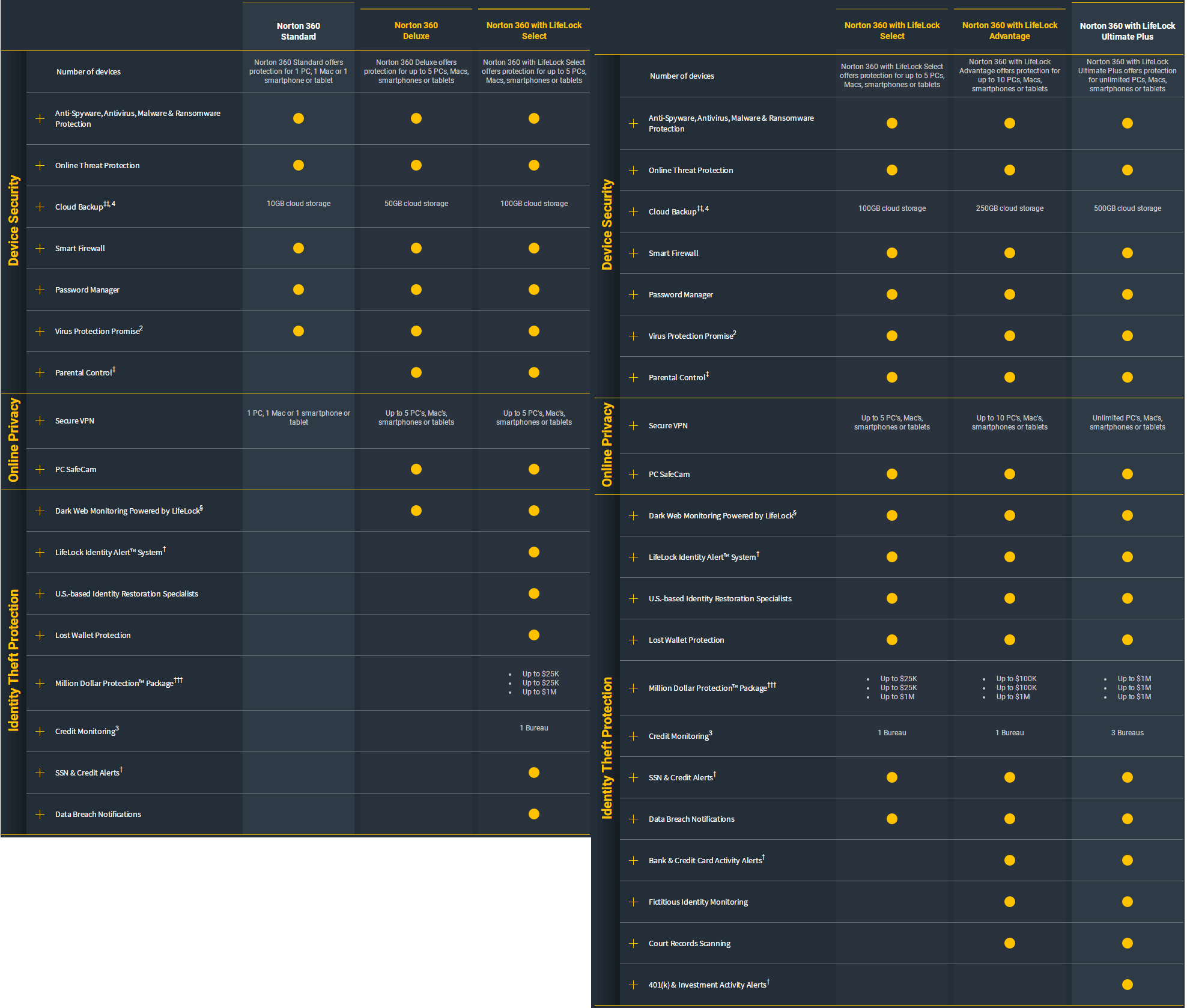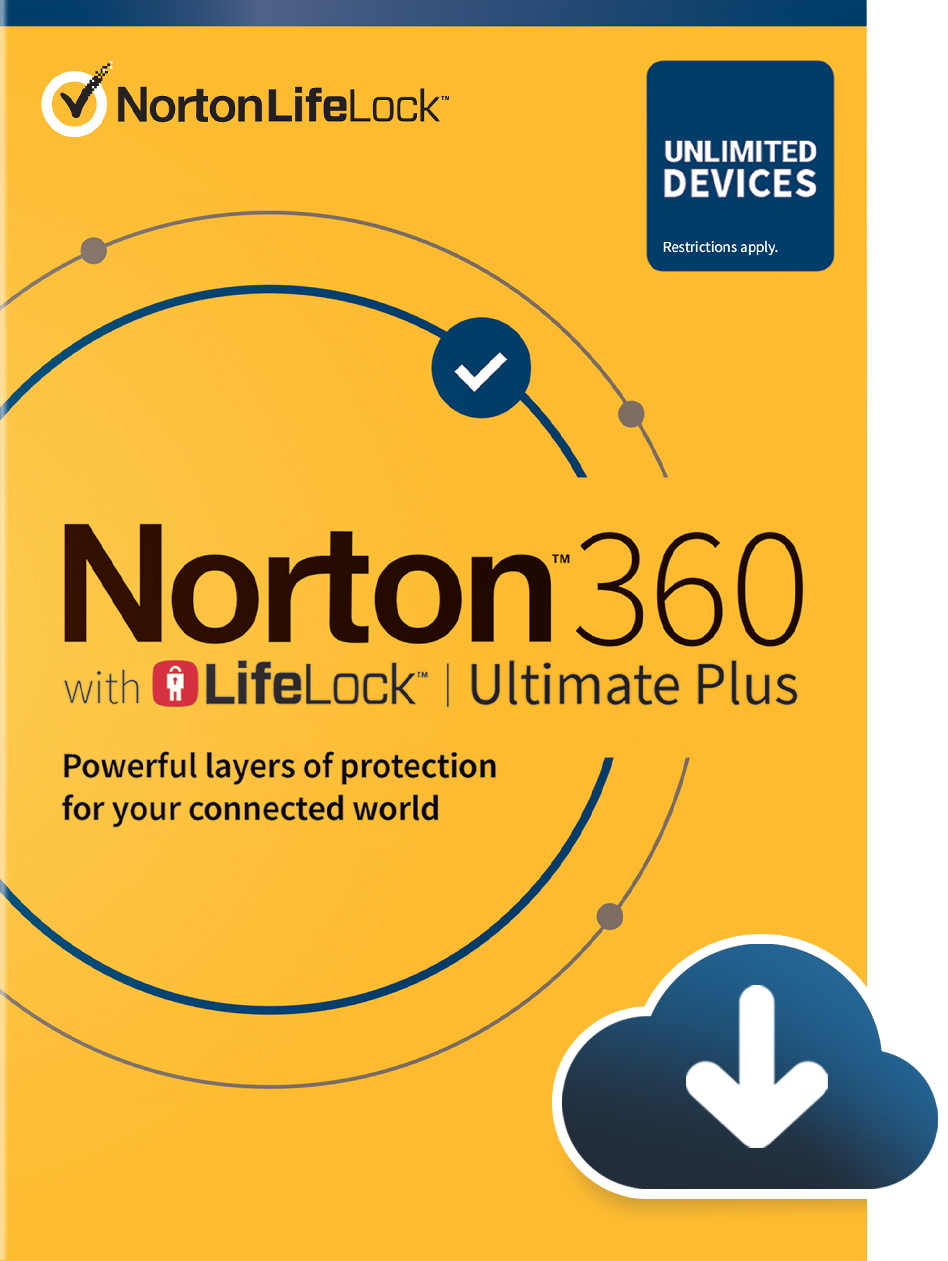

NORTON 360 LIFELOCK PLANS FULL
During my testing, Norton’s full scan and real-time protection were both able to detect every single malware file I tried to download, with minimal system slowdown and no false positives. Its anti-malware engine uses machine learning, advanced heuristics, and a malware directory to identify malware - from simple viruses and trojans to advanced malware like spyware, ransomware, and cryptojackers. By using a VPN, you protect the data packets sent and received on your network, helping to shield them from packet interception.Norton 360 is my favorite antivirus in 2023 - it’s got a powerful anti-malware engine, a wide range of internet security tools, an intuitive online dashboard, and good customer support, all for a better price than most competitors. VPNs create an encrypted tunnel through which your network traffic travels. Private networks are less likely to fall victim to passive sniffing attacks.

NORTON 360 LIFELOCK PLANS PATCH
Keeping your apps and operating system up to date helps patch vulnerabilities that attackers can otherwise exploit.
NORTON 360 LIFELOCK PLANS SOFTWARE
One of the easiest and best ways to prevent packet sniffing is to keep your software updated. It can also help block malware, viruses, and other threats that may accompany sniffing attacks. Installing a strong antivirus tool can help protect your devices from any sniffers that may be hiding out on your computer or network. Ensure your firewall is enabled to give your computer a second line of defense against packet sniffers trying to break into your home network. Most new devices come with a built-in firewall.

Here are a few ways to prevent sniffers from gaining access to your network and connected devices: And malware and other threats can wreak havoc on your devices.īecause packet sniffing attacks are often difficult to detect, one of the best ways to deal with them is to prevent them from infiltrating your network in the first place. Once a packet interceptor starts sniffing around, you’re at risk of having malicious software (malware) injected into your network directly or via an infected website you’re redirected to. Sophisticated internet sniffing attacks aren’t fooled by cute spy illustrations - they can collect your login and financial info if left undetected.

In serious cases, sniffing could lead to identity theft.Įven if you use incognito mode to do your banking, private browsing modes usually aren’t encrypted. This can lead to your data being sold to data brokers or third-party advertisers. Passive sniffing attacks can sit undetected on your network for a long time, giving hackers plenty of opportunities to collect your personal data. Without proper network encryption, packet sniffers can intercept emails, direct messages, or other communications, exposing personal info and sensitive company data. For companies that rely on strong connections for their business or security, these outages can be devastating. Here are some of the most common threats associated with network sniffers:Īctive sniffing attacks flood networks with extra traffic, which can severely disrupt connections to the network. Sniffing in the computer security context can devastate a targeted network.


 0 kommentar(er)
0 kommentar(er)
